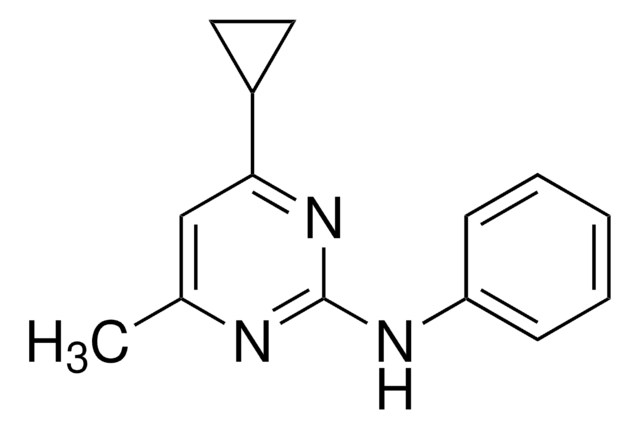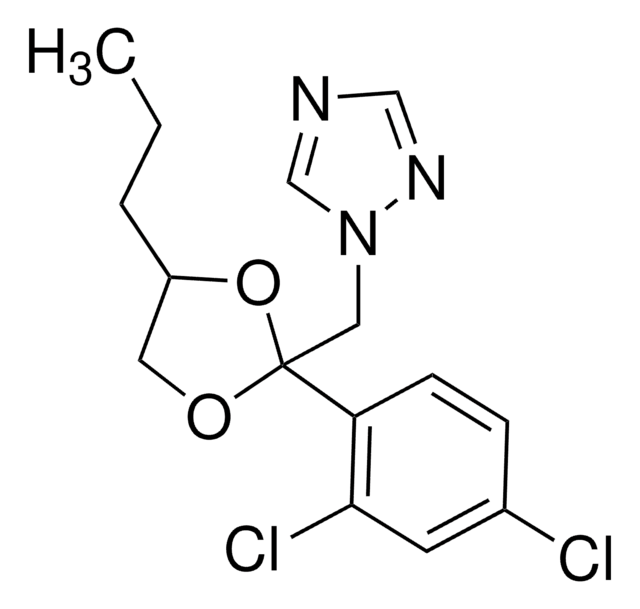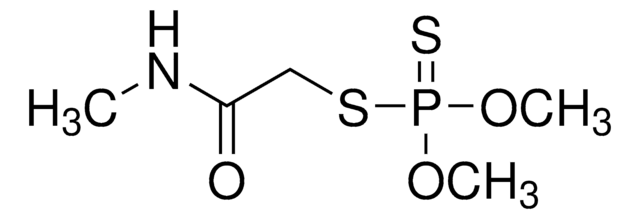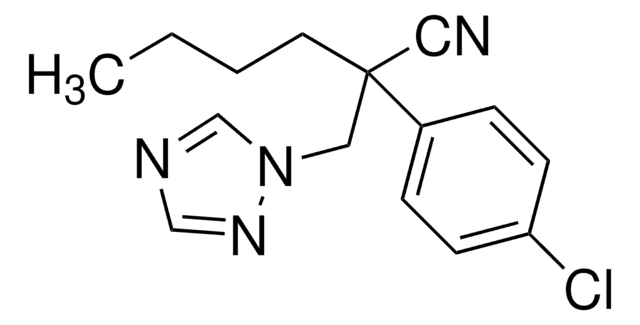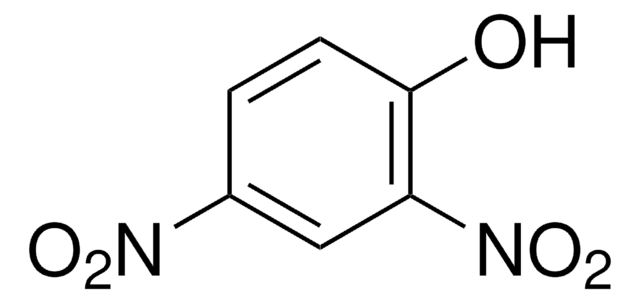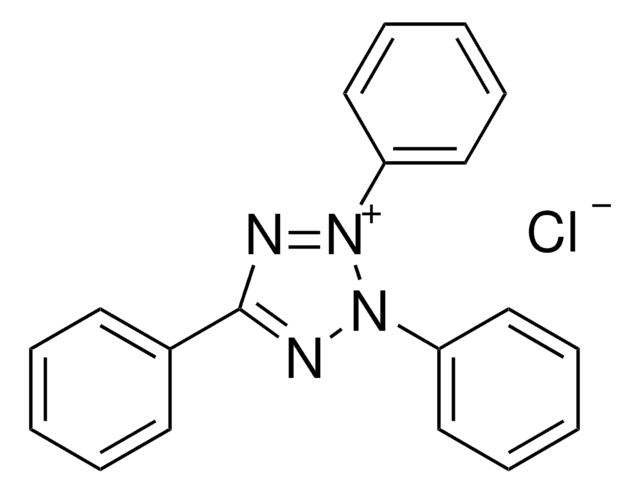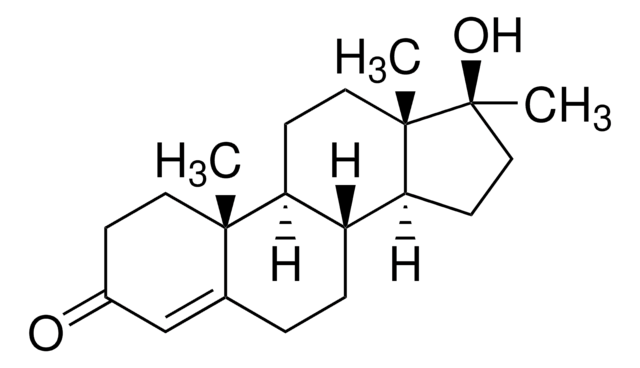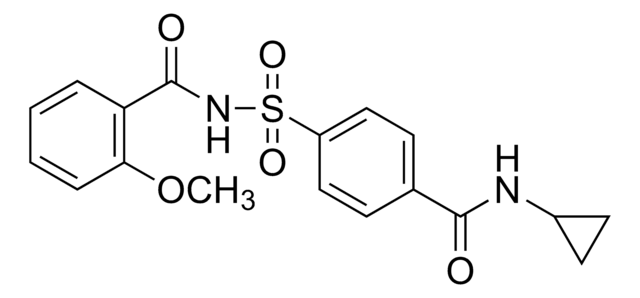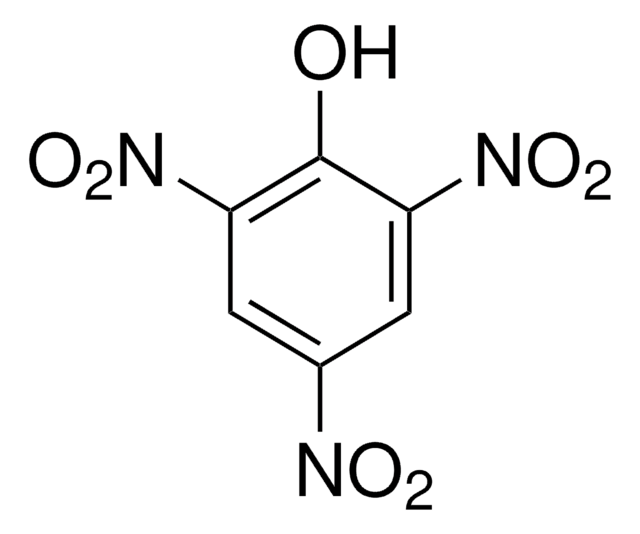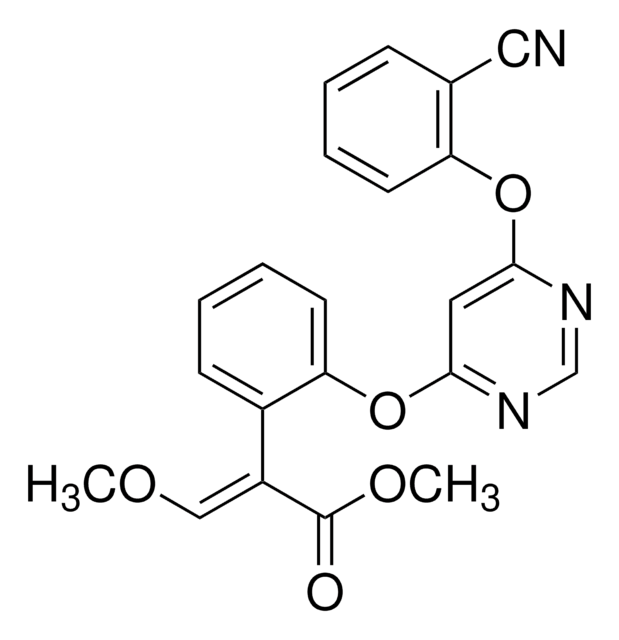45484
Fenarimol
PESTANAL®, analytical standard
About This Item
Empfohlene Produkte
Qualität
analytical standard
Qualitätsniveau
Produktlinie
PESTANAL®
Haltbarkeit
limited shelf life, expiry date on the label
Methode(n)
HPLC: suitable
gas chromatography (GC): suitable
Anwendung(en)
agriculture
cleaning products
cosmetics
environmental
food and beverages
personal care
Format
neat
SMILES String
OC(c1ccc(Cl)cc1)(c2cncnc2)c3ccccc3Cl
InChI
1S/C17H12Cl2N2O/c18-14-7-5-12(6-8-14)17(22,13-9-20-11-21-10-13)15-3-1-2-4-16(15)19/h1-11,22H
InChIKey
NHOWDZOIZKMVAI-UHFFFAOYSA-N
Suchen Sie nach ähnlichen Produkten? Aufrufen Leitfaden zum Produktvergleich
Allgemeine Beschreibung
Anwendung
- Honeys, honeybees and pollens by QuEChERS extraction followed by analysis using liquid chromatography-electrospray ionization-tandem mass spectrometry (LC-ESI-LC-MS/MS) combined with multiple reaction monitoring (MRM) detection.
- Grapes by ethyl acetate extraction, dispersive solid phase extraction (d-SPE) clean-up and LC-ESI-MS/MS with MRM detection.
- Fruit-based baby food samples by programmed temperature vaporizer injection-low pressure gas chromatography coupled with high resolution time-of-flight mass spectrometry (PTV-LP-GC-HR-TOF-MS).
- Foodstuffs by capillary GC-MS equipped with electron impact (EI) mode of ionization.
- Soya grain samples by LC-ESI-MS/MS.
Rechtliche Hinweise
Signalwort
Warning
H-Sätze
Gefahreneinstufungen
Aquatic Chronic 2 - Lact. - Repr. 2
Lagerklassenschlüssel
11 - Combustible Solids
WGK
WGK 2
Flammpunkt (°F)
212.0 °F - closed cup
Flammpunkt (°C)
100 °C - closed cup
Persönliche Schutzausrüstung
Eyeshields, Gloves, type P3 (EN 143) respirator cartridges
Hier finden Sie alle aktuellen Versionen:
Besitzen Sie dieses Produkt bereits?
In der Dokumentenbibliothek finden Sie die Dokumentation zu den Produkten, die Sie kürzlich erworben haben.
Kunden haben sich ebenfalls angesehen
Unser Team von Wissenschaftlern verfügt über Erfahrung in allen Forschungsbereichen einschließlich Life Science, Materialwissenschaften, chemischer Synthese, Chromatographie, Analytik und vielen mehr..
Setzen Sie sich mit dem technischen Dienst in Verbindung.